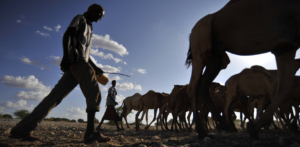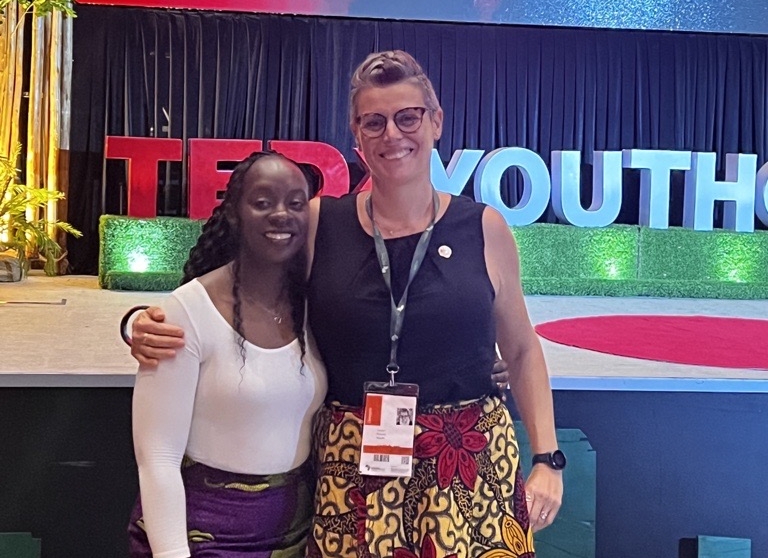What is food systems leadership – and can it drive transformation?
What is food systems leadership – and can it drive transformation?
Brenda Mareri and stella odhiambo
Latest posts
Share:
In the complex and ever-changing world of food systems, traditional approaches often fall short of addressing the root causes of challenges like malnutrition, hunger, food insecurity, climate change and environmental degradation. This is where the concept of Food Systems Leadership becomes crucial.
Food systems leadership is a term that’s easy to understand in theory or in high-level strategy meetings. But what does it actually mean in practice? When we talk about transforming the way we produce, distribute, and consume food, what does a food systems leader do?
We look at some of the drivers and components of this approach to leadership.
Drivers of Systems Leadership
Systems Mindset: Seeing the bigger picture
Food systems leadership begins with adopting a systems mindset, which means recognising the food system as a complex web of interconnected parts, from production and distribution to consumption and waste management. It’s about actively identifying how various elements like policy, agriculture, economics, and community health interact and impact one another.
For instance, understanding how local farming practices influence nutrition in schools can lead to initiatives that support both farmers and children’s health. It’s about seeing the whole picture so that every action you take addresses the root causes of issues, not just the symptoms.
A great example is the Home Grown School Feeding (HGSF) model which constitutes a school feeding approach that provides safe, diverse and nutritious food, sourced locally from smallholders employing sustainable farming practices, to children in schools. This model is being piloted across many countries in Africa and addresses issues of nutrition, market access, social inclusion and economic development.
By viewing the system as a whole, leaders can better understand the root causes of issues and develop solutions that address the broader picture rather than just the symptoms.
Collective Action: Mobilising real people for real results
At the heart of food systems leadership is the ability to mobilise collective action. This means bringing together farmers, policymakers, business leaders, and community organisations to work towards common goals.
An example could be forming coalitions that lobby for better food safety regulations or creating community-supported agriculture (CSA) programs that directly connect consumers with local farmers. It’s about harnessing the power of many to drive change that no single entity could achieve on its own.
Enabling Conditions: Laying the groundwork for success
Creating the enabling conditions that allow sustainable solutions to take root is key. This goes beyond addressing immediate problems; it’s about shaping the policies, investments, and infrastructure that support long-term change.
For example, advocating for government subsidies that encourage sustainable farming practices or securing investment for building local food processing facilities.
A great example is the Tax Incentives the Nigerian Government introduced in 2022 to scale the purchase and use of solar renewable energy products, this in turn is a positive shift to create an environment to allow sustainable transition into the Green Energy economy.
These are the actions that create the foundation upon which a resilient food system can be built.
Components of Systems Leadership
At Wasafiri, our Systemcraft approach offers a comprehensive framework for this transformation, centred on five core components that are essential for driving systemic change in food systems.
Vision setting: Defining clear, achievable goals (Set the direction)
A shared vision among stakeholders is essential. Clear, achievable outcomes that everyone can work towards will guide the creation of specific initiatives. It’s about setting a direction that everyone can follow, with clear milestones to track progress.
The Malabo Declaration of 2014 was a pivotal Vision Setting strategy that was adopted by the AU Assembly Heads of State and Government in 2014 and still provides the direction for Africa’s agricultural transformation for the period 2015 – 2025.
Windows of opportunity: Meeting you where it matters most (Make it matter)
A systems leader will leverage windows of opportunity that matter the most to stakeholders in the system.
An opportunity can arise for instance, when there’s a shift in public opinion, a new policy proposal, or a crisis that brings food issues to the forefront. A systems leader will spot the opportunity and be ready to act.
An example of this is how the French Revolution of 1789, was sparked by an unexpected window of opportunity, when King Louis XVI and Marie Antoinette living in extreme extravagance and nobility increased grain taxes that led to bread being too expensive. This sparked the revolution that the people exploited.
Ecosystem building: Creating networks that work (Organise for collaboration)
Building the networks and ecosystems that support ongoing collaboration and innovation will create an ecosystem for change. It’s about organising the right people, tools, and information to ensure that the food system functions smoothly and efficiently.
These networks can serve the sole purpose of creating a flow of information amongst stakeholders or more action-oriented networks striving for change at a systems level.
For example, setting up regular meetings between local farmers, policymakers, Market Owners or Associations and Buyers of produce, to discuss supply chain challenges or creating a digital platform where stakeholders can share resources and ideas.
Building incentive models: Aligning interests for change (Change the incentives)
For real, lasting change to happen, stakeholders need the right incentives. This could mean working with local governments to introduce tax breaks for businesses that reduce their food waste or creating financial incentives for farmers to adopt regenerative practices.
These incentive models help align the interests of different stakeholders, making it easier to achieve widespread buy-in and participation.
By addressing what motivates people—whether it’s financial gain, community recognition, or environmental stewardship—you can drive significant changes in behaviour.
Addressing Knowledge Asymmetry: Sharing information where it’s needed (Harness collective intelligence)
Finally, food systems leadership is about making sure that all stakeholders have access to the knowledge and information they need to make informed decisions.
This could mean creating educational programs for farmers on sustainable practices, setting up data-sharing platforms that track food supply chain efficiency, or organising workshops that teach consumers about the benefits of buying local.
Ensuring that knowledge flows freely and effectively among everyone involved could bridge gaps that can otherwise hinder progress.
Conclusion
Food systems leadership is not an abstract concept; it’s a hands-on, practical approach to transforming our food systems for the better. It moves beyond isolated interventions, focusing instead on the underlying conditions and collective actions needed to create lasting change – and in that sense, it is applicable to systems leadership when tackling any complex social issue.
By focusing on these practical aspects, we can drive the real, measurable change needed to build a more sustainable, equitable, and resilient food system for all.
Learn more
Are you interested in understanding how you can use Systemcraft to work out a complex problem you’re working on? Check out our Systemcraft Essentials course.
Brenda Mareri is a Senior Manager for Food at Wasfiri Consulting. Connect with her on LinkedIn.










